The Japanese approach to hair care is less about a quick wash and more about a thoughtful ritual. It’s a philosophy centered on achieving long-term hair health, not just a temporary fix. At its core, this routine champions a healthy scalp as the absolute foundation for strong, beautiful hair, a goal reached through gentle handling and deeply nourishing ingredients.
Why the Japanese Approach to Hair Care Works
If you've ever felt like your hair care is just another chore on the list, the Japanese method offers a refreshing change of perspective. It re-frames hair care as an act of self-care. The whole idea is to respect your hair and scalp as one interconnected system, working with it, not against it.
This is a proactive approach. Instead of desperately trying to repair damage after it’s happened, the focus is on prevention and consistent nurturing from day one. The end goal isn't simply clean hair; it's about building hair that is resilient, glossy, and genuinely healthy from the root all the way to the tip.
This cultural obsession with hair vitality is clearly reflected in the market. The Japanese hair care market soared to USD 6.9 billion this year and is projected to hit USD 9.7 billion by 2033, according to a recent analysis from IMARC Group. This growth is fueled by people who want products that don't just mask problems but preserve the hair's natural beauty.
The Core Philosophies
The incredible effectiveness of this routine really comes down to a few key principles that often differ from what many of us are used to in the West. Understanding these concepts is the "why" behind the specific steps you’ll learn later on.
- Scalp First, Hair Second: A healthy scalp is everything. You have to think of it like rich, fertile soil for a garden—if the soil isn't healthy, the plants won't thrive. Cleansing is less about scrubbing your hair strands and more about purifying the scalp to create the perfect environment for strong growth.
- Gentleness is Strength: Forget about aggressive towel rubbing, yanking a brush through tangles, or harsh scrubbing. Every single step, from the way you wash to how you dry, is done with a gentle, deliberate touch to minimize friction and prevent breakage.
- Moisture is Everything: The entire routine is expertly designed to layer and seal in hydration at every possible stage. From pre-wash oil treatments to nourishing leave-in conditioners, the constant goal is to keep your hair supple, hydrated, and shielded from the elements.
At its heart, the Japanese hair care routine is an investment in your hair's future. It teaches you to listen to what your hair truly needs and respond with consistent, gentle care, leading to results that are not only beautiful but sustainable.
When you start to adopt this mindset, you build a much stronger, more intuitive relationship with your hair. The focus shifts from fighting its natural tendencies to enhancing them. You can dive deeper into how this holistic view leads to such amazing results in our article exploring why Japanese haircare is so good. This foundation is key to mastering the practical steps that create that noticeable, lasting strength and shine.
The Pre-Wash Ritual for Scalp Health and Protection
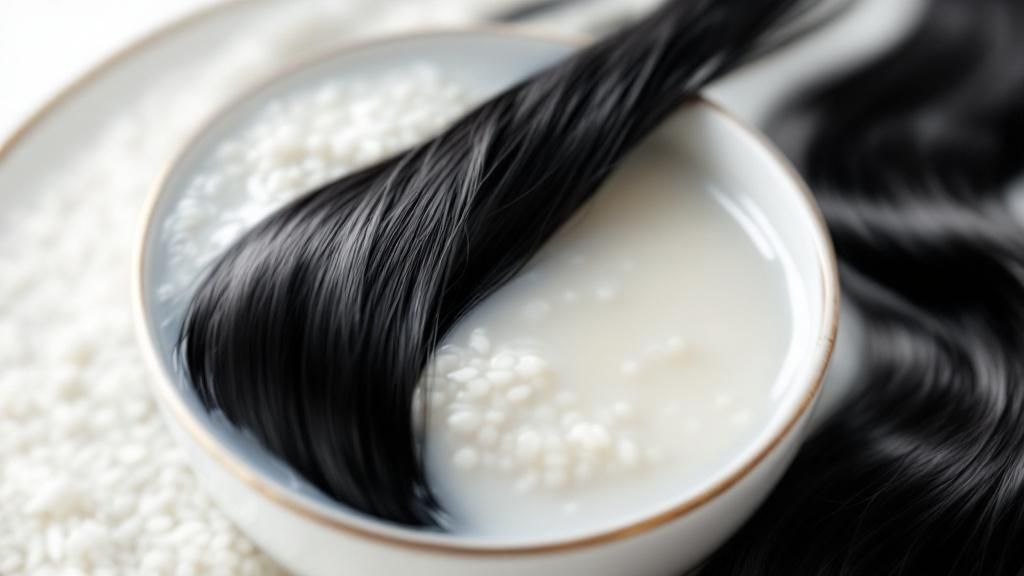
If you ask anyone who truly understands Japanese hair care, they'll tell you that great hair starts long before you even turn on the shower. It all begins with a pre-wash ritual, a crucial step that sets the stage for a truly effective cleanse. This isn’t just some extra, indulgent step; it's a strategic move to protect your delicate strands and invigorate your scalp.
The whole process kicks off on dry hair. The idea is to gently detangle and awaken the scalp, which dramatically cuts down on breakage later on when your hair is wet and more fragile. This is where a traditional Japanese comb, often meticulously crafted from boxwood (tsuge), really shines. Its smooth, rounded teeth are designed to glide through hair without a single snag, and the simple act of brushing doubles as a light massage to get the blood flowing to your roots.
This deep respect for scalp health is a massive focus in Japan. In fact, the Japanese hair and scalp care market is valued at around USD 4.7 billion, with anti-dandruff products leading the charge. This really shows you how seriously consumers there view the scalp as the true foundation for beautiful, healthy hair.
Applying Protective Hair Oil
Once your hair is brushed through, it's time for a nourishing oil. This pre-shampoo treatment, sometimes called a "pre-poo," is absolutely fundamental. The undisputed star of this step is often camellia oil, known as Tsubaki oil in Japan. For centuries, this has been the secret to lustrous hair—it’s lightweight but deeply penetrating.
The way you apply it is just as important as the oil itself. You don't want to drench your scalp. Instead, you'll focus the oil on the mid-lengths and ends of your hair. These are the oldest, most porous parts of each strand, making them the most vulnerable to damage.
Pro Tip: Gently warm a few drops of oil between your palms before smoothing it through your hair. The warmth helps the oil spread more evenly and absorb much more effectively into the hair shaft.
This oiling step serves a critical protective purpose. It creates a barrier that stops your hair from soaking up too much water and swelling during washing—a damaging cycle known as hygral fatigue that can seriously weaken hair over time. It also shields your hair from the harsh, stripping effects of some shampoos, making sure you wash away impurities without sacrificing your hair's natural moisture.
Choosing and Using Your Oil
While camellia oil is the timeless choice, other oils can also work wonders depending on your hair's unique needs. The goal is always to find one that nourishes without leaving your hair feeling heavy or greasy.
- For Fine Hair: Argan oil is a fantastic alternative since it’s incredibly light.
- For Coarse or Very Dry Hair: You might want something a bit richer, like coconut or avocado oil.
- For All Hair Types: You really can't go wrong with camellia (Tsubaki) oil; it's a brilliant all-rounder. You can discover more about its amazing properties in our deep dive into how camellia hair oil transforms your hair.
After applying, give the oil some time to work its magic—at least 20-30 minutes is ideal. If you have the time and your hair is particularly thirsty, you can turn it into an intensive treatment by leaving it on for a few hours, or even overnight. Just wrap your hair in a soft towel or cap. This beautiful pre-wash ritual ensures your hair enters the cleansing phase protected, nourished, and perfectly prepped to shine.
Mastering the Art of the Double Cleanse

The heart of any Japanese hair care routine is the wash itself, but it’s far more strategic than a simple scrub and rinse. We're talking about the double cleanse, a methodical two-step process that elevates shampooing into a scalp-purifying ritual. This isn’t just about shampooing twice; each wash has a distinct and vital purpose.
Think of the first cleanse as a gentle primer. Its only job is to lift away all the surface-level impurities like dust, sweat, and styling product residue. You don't need a huge amount of shampoo for this. Just work a small amount into a light lather and focus on rinsing away the day's grime. This initial wash clears the way for the main event.
Now that the surface junk is gone, the second cleanse can truly get to work. This is where you create a rich, dense, almost marshmallow-like lather. This thick foam is the secret sauce, allowing you to deeply purify the scalp and hair follicles without causing harsh friction or tangling your strands.
The Technique for a Perfect Lather
Creating that ideal foam is an art, and it's simpler than you think. A common mistake is applying shampoo directly to your head. Instead, dispense it into your wet palms, add a splash of water, and rub your hands together vigorously. Keep going until you have a thick, cushiony lather. It's this foam that does the cleaning, not the liquid concentrate.
The goal is to let the rich foam do the work. By creating a dense lather first, you ensure a gentle yet incredibly effective cleanse that purifies the scalp without stripping the hair of its essential moisture.
Once you have that perfect lather, it's time to massage. Using the soft pads of your fingertips—never your nails—gently but firmly work the foam over your entire scalp in slow, circular motions. This isn't just about getting clean; it's a vital step to boost blood circulation, which delivers more nutrients to the hair roots and promotes healthier growth. For those looking to really nail this crucial step, you can learn more about how to double cleanse your hair effectively.
Rinsing and Choosing Your Shampoo
Finally, rinse everything out thoroughly with lukewarm water, not hot. Hot water can strip your scalp of its natural oils and leave your hair cuticles open and vulnerable to damage. Make sure all the shampoo is gone, paying extra attention to the nape of your neck and behind your ears, where product loves to hide.
Of course, choosing the right shampoo is just as important as the technique itself. Japanese shampoos are often formulated specifically for this two-step method, and finding the right one can make all the difference. Our full guide can help you master the Japanese hair care routine for gorgeous hair and find products tailored to your needs.
To get you started, it helps to understand what you're looking for. Japanese shampoos often fall into a few key categories, each designed for a specific purpose.
Choosing Your Ideal Japanese Shampoo
| Shampoo Type | Key Ingredients | Best For Hair Type | Primary Benefit |
|---|---|---|---|
| Amino Acid-Based | Cocoyl Glutamate, Alanine | Dry, Damaged, Sensitive | Gentle cleansing, moisture retention |
| Sulfate-Free | Plant-based surfactants | Color-Treated, All Types | Mild cleansing that preserves color and oils |
| Scalp Care | Menthol, Seaweed, Clay | Oily, Prone to Buildup | Deep purification and balancing |
| Moisturizing | Camellia Oil, Honey, Silk | Dry, Frizzy, Coarse | Intense hydration and smoothness |
Understanding these basics will help you zero in on a formula that addresses your specific hair concerns, turning a simple wash into a truly restorative treatment.
Deep Conditioning And Nourishing Treatments
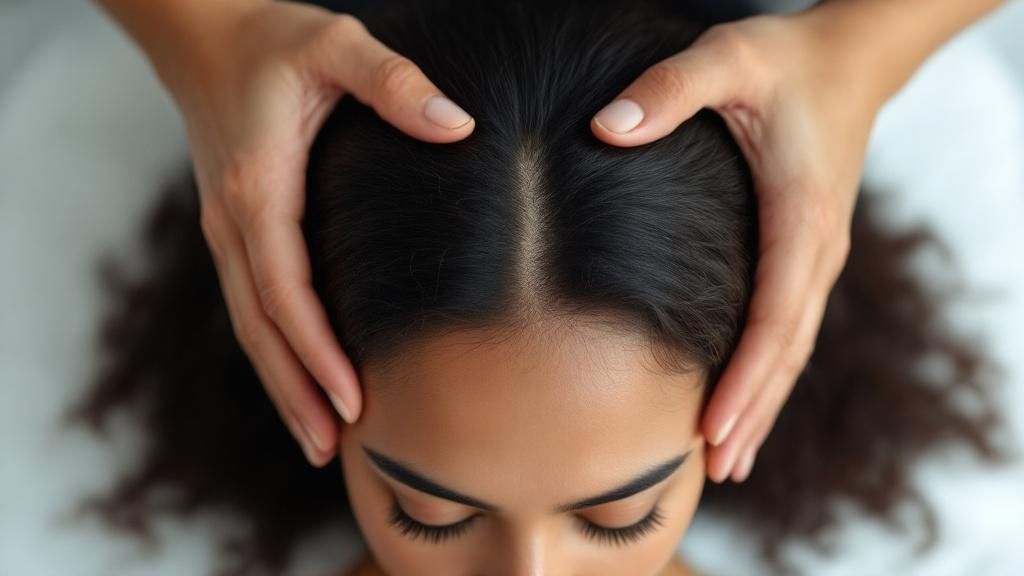
Once you’ve finished your double cleanse, your hair cuticles are open and perfectly primed to soak up deep nourishment. This is your moment to replenish lost moisture and rebuild the hair shaft from the inside out—a cornerstone of any true Japanese hair care routine.
While a quick condition after every wash is a must, the real transformation comes from more intensive, weekly treatments. This is where the magic happens.
Your application technique makes all the difference here. You’ll want to focus your conditioner or mask on the mid-lengths and ends of your hair. These are the oldest, most fragile parts that need the most love. Applying product too close to your scalp can weigh down the roots and trigger unwanted oiliness, especially if you have fine hair.
A pro tip? Gently squeeze out all the excess water before you apply your product. This prevents it from being diluted and ensures your hair absorbs the maximum amount of goodness.
Elevating Your Weekly Treatment
At least once a week, make it a ritual to swap your everyday conditioner for a rich, intensive hair mask. Think of this as non-negotiable for repairing the cumulative damage from heat styling, environmental stress, and daily life. It’s your best tool for restoring your hair’s natural bounce, strength, and shine.
Want to turn this into a true spa-like experience? After working the mask through your hair, wrap it up in a warm, damp towel or a simple shower cap. The trapped heat gently lifts the hair cuticle, allowing all those incredible ingredients to penetrate far more deeply than they would on their own. Give it a good 15-20 minutes to really work its wonders.
Key Ingredients To Look For
When you're browsing for that perfect treatment, keep an eye out for ingredients that are revered in Japanese beauty. These are the time-tested powerhouses that deliver that signature, silky-soft result.
- Hydrolyzed Silk & Keratin: These are like liquid gold for your hair. They act like puzzle pieces, filling in the gaps along the hair cuticle to smooth down frizz and rebuild strength.
- Rice Water & Rice Bran Extract: You’ll find these ancient secrets packed with amino acids, vitamins, and minerals. They’re fantastic for improving elasticity and giving your hair a brilliant, reflective gloss.
- Seaweed & Algae Extracts: These marine botanicals are masters of hydration. They drench your hair in moisture without ever weighing it down.
- Tsubaki (Camellia) Oil: A true classic for a reason. This beautiful oil seals in all that newfound moisture and leaves your hair with an incredibly soft, touchable finish.
The goal of a Japanese hair treatment isn't just about making your hair feel soft for a day. It’s about fundamentally rebuilding the hair's internal structure for long-term health, resilience, and incredible shine.
By making these potent treatments a regular part of your routine, you’re not just conditioning—you’re actively repairing and fortifying your hair against future damage.
And if you’re particularly focused on boosting vitality and thickness, you might want to check out our guide on the top Japanese hair growth products for healthy hair. You'll find that many of them feature these same powerful, restorative ingredients.
Protective Finishing and Styling Techniques

You might think your hair care routine is over once you step out of the shower, but the real magic happens in the finishing touches. These final steps aren't just for show; they're essential for protecting your strands and sealing in all the moisture you just spent time putting back in.
It all starts with how you dry your hair. Believe it or not, your standard terrycloth towel can be one of the biggest culprits of damage, with rough fibers that snag and rough up your delicate hair cuticles. Making the switch to a soft, super-absorbent microfiber towel can be a game-changer. Instead of that vigorous rubbing motion, gently squeeze and pat your hair to absorb the excess water. This simple tweak alone drastically cuts down on friction and prevents unnecessary breakage.
Layering Leave-In Products
Once your hair is damp but no longer dripping, it's time to layer in your leave-in products. Think of this as a deliberate, multi-step process for locking in hydration and building a protective shield.
I always start with something lightweight, like a leave-in conditioner or a nourishing hair milk. Just work a small amount through your mid-lengths and ends—this will help with detangling and create a base layer of moisture.
Next comes the non-negotiable step: sealing it all in with a good hair oil. The iconic camellia (Tsubaki) oil is a classic for a reason. You only need a few drops. Warm them up between your palms and smooth the oil over your ends to seal the hair cuticle, fight off frizz, and give your hair that signature, healthy-looking gloss without ever feeling greasy or heavy.
The final steps are all about creating a shield. By layering moisture and sealing it with oil, you’re not just styling your hair; you’re protecting it from environmental stressors all day long.
Embracing Minimal Heat Styling
A huge part of the Japanese hair philosophy is keeping heat damage to an absolute minimum. Whenever you can, letting your hair air-dry is always the best choice.
Of course, sometimes you need to use a hairdryer. When you do, always—and I mean always—apply a quality heat protectant first. Set your dryer to its lowest heat and speed setting, and be sure to hold it at least 15-20 cm away from your hair. This prevents you from scorching your scalp or your strands. A great rule of thumb is to dry your hair until it's about 80% dry, then just let the air handle the rest.
This gentle approach to styling is what helps maintain your hair's strength and health over time. If you're looking for some styling inspiration that aligns with this gentle philosophy, our guide on 8 Japan hair styling trends is a great place to start.
And the protection doesn't stop when you go to bed! Sleeping on a silk or satin pillowcase is a final, thoughtful touch that reduces friction and prevents tangles overnight. You'll wake up to smoother, healthier hair that's ready for whatever the day brings.
Your Questions About the Japanese Hair Routine, Answered
Jumping into a new hair care philosophy is exciting, but it almost always comes with a few questions. How do you make this work with a packed schedule? Is it right for your specific hair type? Let's walk through some of the most common things people wonder about when they're ready to embrace the Japanese hair care routine.
Think of this as your practical guide to getting started with total confidence. This thoughtful approach is incredibly rewarding, and the key is adapting it to your own lifestyle and needs.
How Often Should I Do the Full Routine?
This is probably the number one question I get, and the honest answer is that you have to listen to your hair and scalp. The complete, multi-step ritual—we're talking the pre-shampoo oiling and a deep conditioning mask—isn't something you need to do every single day.
For most people, performing the full ritual 1-2 times per week is the sweet spot. This is your chance to give your scalp a deep reset and flood your strands with intensive nourishment.
On other wash days, you can absolutely stick to the core principles. A good double cleanse and your regular conditioner can be done every 2-3 days, depending on how quickly your scalp gets oily.
- Oily Scalp: You might find that double cleansing every other day is perfect for keeping your scalp feeling fresh and balanced.
- Dry or Coarse Hair: You can probably push it to 3 or even 4 days between washes, really focusing on locking in that moisture.
The finishing steps, like applying a leave-in conditioner and sealing with a touch of oil, should be part of your post-wash ritual every time to keep your hair protected.
Can I Just Use My Current Products?
You can certainly start by adopting the techniques with the products you already have on your shelf. However, you’ll see the most authentic and impressive results by using products that were specifically formulated for this method. Japanese beauty products are designed to work in perfect harmony with these steps.
Take Japanese shampoos, for instance. They are often created to whip up that perfect, dense foam that’s ideal for a gentle yet incredibly effective double cleanse. Their treatments are packed with ingredients like camellia oil, rice bran extract, and hydrolyzed silk—the very heart of this entire philosophy.
My best advice? Start with a strategic swap. Instead of buying a whole new routine at once, try introducing just one or two key Japanese products. A high-quality scalp treatment or a deeply nourishing hair mask can be a fantastic way to experience the difference for yourself.
This approach lets you see the unique benefits firsthand without feeling overwhelmed. You can then gradually build your collection as you figure out what your hair truly loves.
Is This Routine Good For Fine Or Oily Hair?
Absolutely. The Japanese hair care routine is remarkably adaptable, and its intense focus on scalp health makes it a massive win for anyone with fine or oily hair.
The double cleanse, in particular, is a total game-changer for managing excess oil. When you thoroughly purify the scalp, you remove the buildup that weighs down roots and can actually trigger even more oil production. Over time, many people find their scalp becomes far more balanced.
Here’s how you can tailor the routine:
- Pre-Wash Oiling: If you have very fine hair, you might skip this step. For oily hair, try applying a very lightweight oil like argan or grapeseed only to the very ends of your hair, keeping it far away from the roots.
- Conditioning: Be religious about applying conditioner and masks only from the mid-lengths down. This is crucial for preventing your hair from getting weighed down at the root.
- Product Choice: When you're shopping, look for Japanese products labeled with the word "saratto" (さっと), which means "light" or "airy." Steer clear of products described as "shittori" (しっとり), as those are designed for intense moisture and might be too heavy for your hair type.
What’s the Biggest Mistake People Make When Starting?
The single biggest and most common mistake is being too aggressive. It's almost a reflex for many of us—scrubbing our scalps hard and rubbing our hair rough with a towel, thinking that’s what it takes to get clean. The Japanese method is built on the complete opposite idea: gentleness is everything.
This means using the soft pads of your fingers for a slow, mindful scalp massage, not scratching with your nails. It means smoothing products through your hair, not mashing them in. It means patting your hair dry with a soft towel, not creating a halo of frizz with frantic rubbing.
Being rough completely cancels out all the benefits of the nourishing products and thoughtful techniques you're using. Patience and a gentle touch are the real secrets to unlocking the incredible results of this routine.
Ready to start your journey to healthier, more beautiful hair? Explore the curated collection of authentic shampoos, conditioners, and treatments at Buy Me Japan. Discover your perfect products and start building your ideal Japanese hair care routine today.
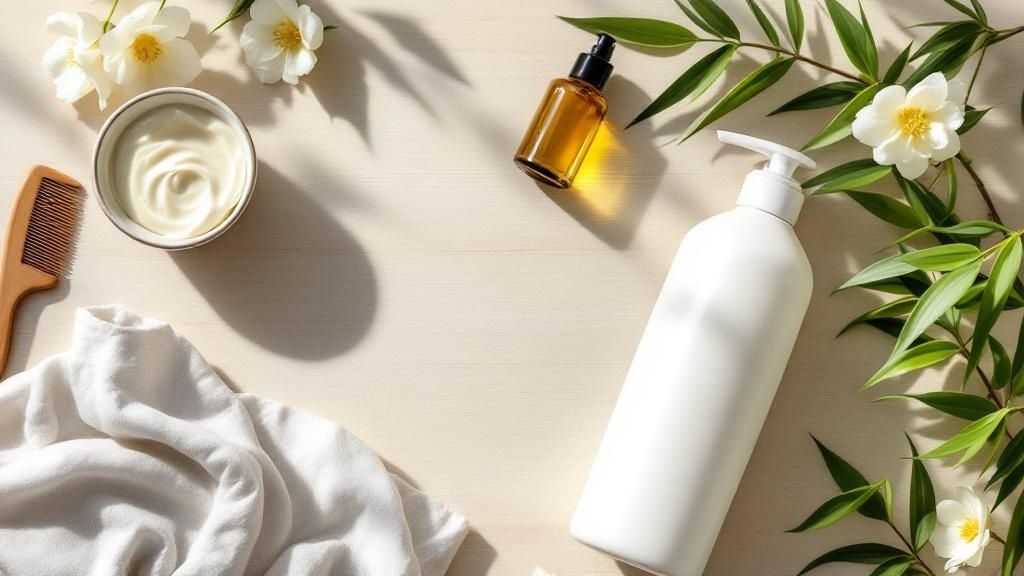
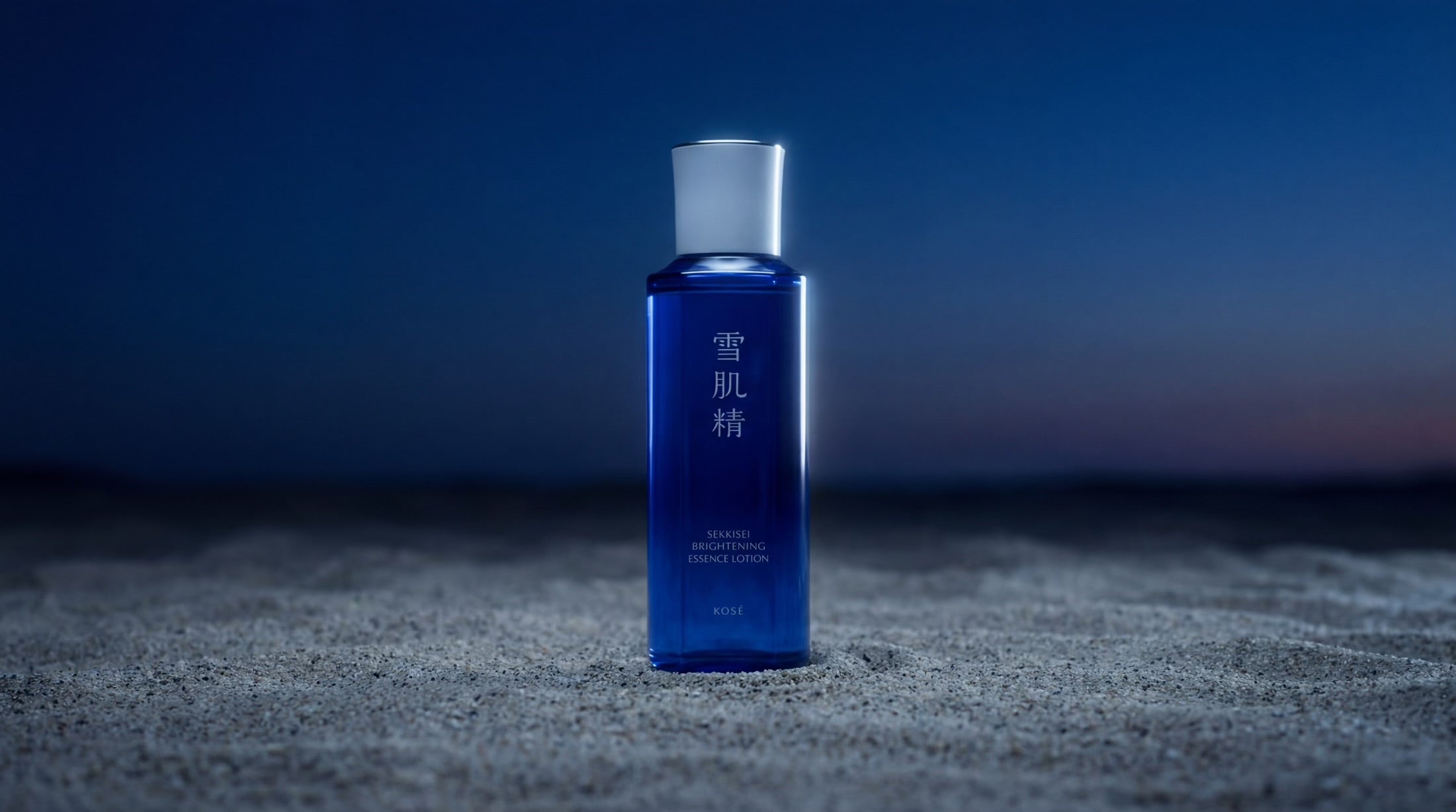
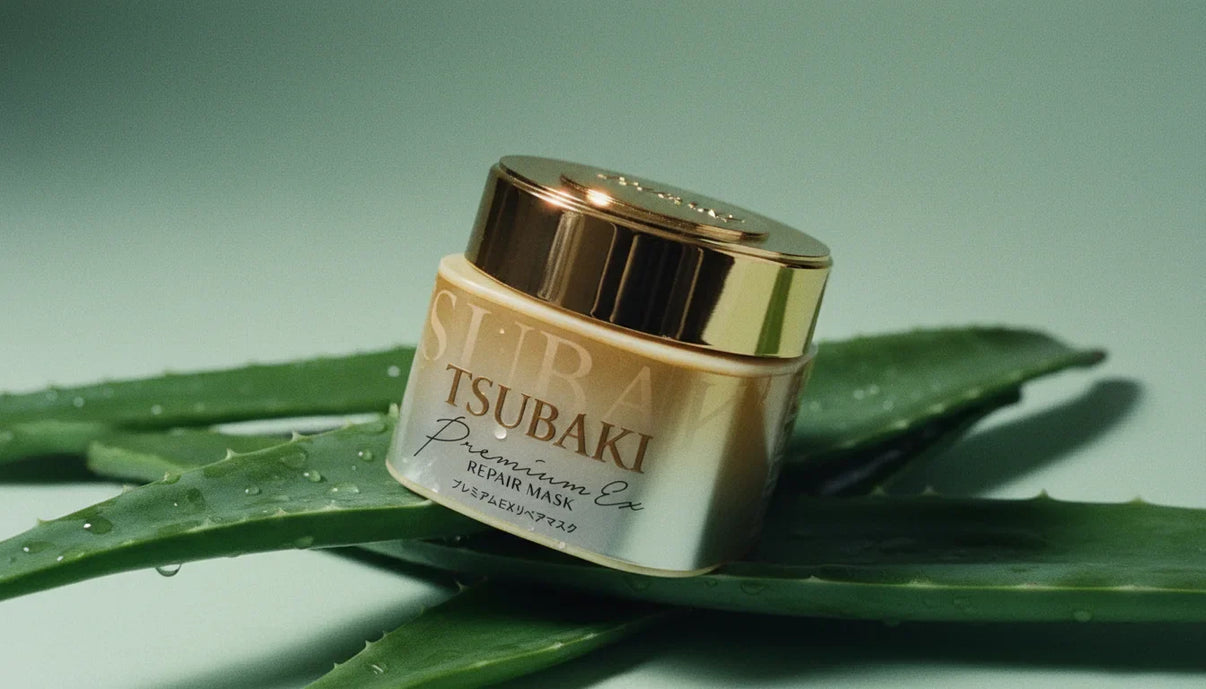
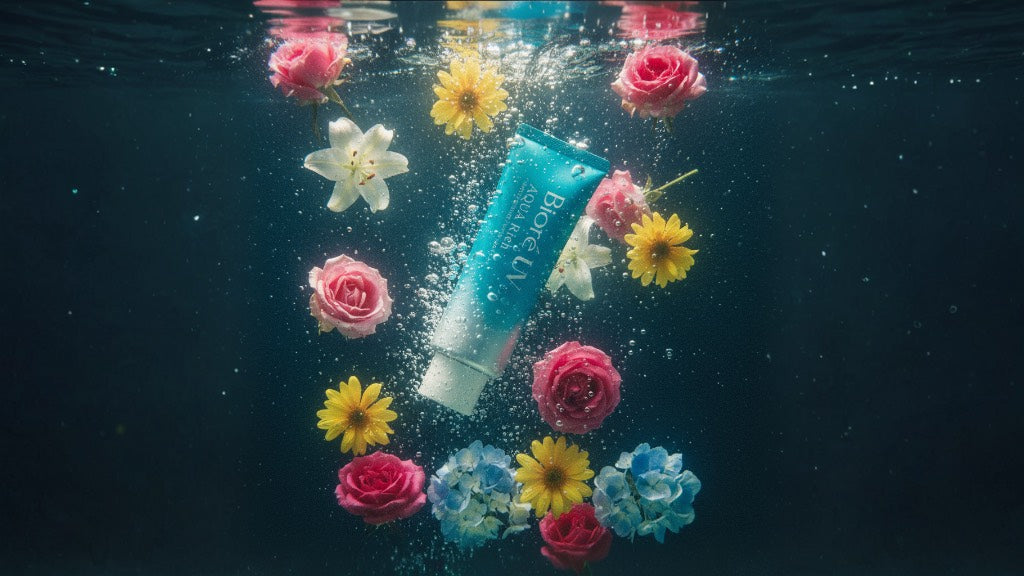
Share:
Camellia Oil Hair Growth: Proven Tips for Stronger Hair
12 Best Japanese Makeup Brushes to Buy in 2025